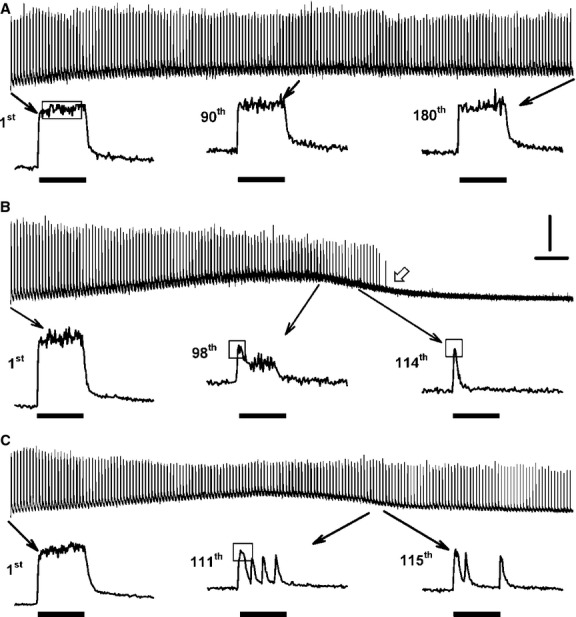Figure 1.

Examples of Ca2+ traces showing complete failure to release Ca2+, partial and complete fade. Traces were from (A) control wild-type fiber; (B) 10 μmol/L glibenclamide-exposed wild-type fiber; (C) Kir6.2-/- fiber. Fatigue was elicited with one contraction every sec for 3 min. The 1st, 90th, and 180th contractions in A are examples for which a plateau phase is maintained during a tetanic contraction. The white arrow at 121 sec in B demonstrates a complete failure to release Ca2+ upon stimulation. The 98th contraction in B, the 111th and 115th in C are examples of partial fade. The 114th contraction in B is an example of complete fade. Vertical line: 0.5 μmol/L Ca2+; horizontal line: 10 sec; horizontal black bars: 200 msec long train of pulses at 140 Hz; open horizontal bars showed how maximum tetanic [Ca2+]i was calculated under various fade conditions (see text for more details).
